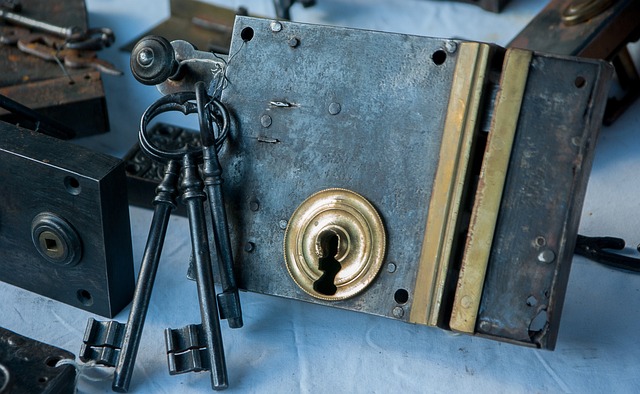Remote properties can benefit from solar power's scalability and cleanliness, especially with the integration of solar motion detectors. These devices enhance security, optimize energy usage, provide efficient lighting, and enable automatic shade control, promoting conservation in off-grid locations. Solar-powered systems are growing popular for their environmental benefits and reduced reliance on non-renewable resources. Solar motion detectors, charging during daylight and using stored energy to detect movement, offer advanced security while contributing to the sustainability of remote living. With tailored installations and regular maintenance, these systems provide efficient power solutions for isolated areas.
In today’s quest for sustainable living, remote properties present unique challenges and opportunities. Understanding the specific needs of these off-grid locations is crucial. This article explores how solar-powered systems, including advanced solar motion detectors, offer a viable solution for enhancing security while promoting environmental stewardship. We delve into the advantages, various types, installation nuances, and maintenance requirements, providing an indispensable guide for those seeking to harness the power of the sun in remote settings.
- Understanding Remote Property Needs
- The Benefits of Solar-Powered Systems
- Types of Solar Motion Detectors and Their Applications
- Installation and Maintenance Considerations
Understanding Remote Property Needs

Remote properties often face unique challenges when it comes to energy accessibility and reliability. These off-grid locations typically require robust, self-sufficient systems that can withstand isolation and varying environmental conditions. Solar power has emerged as a viable solution for such areas due to its scalability, cleanliness, and ability to provide consistent energy even in remote settings.
One essential component of any solar system designed for these properties is integrating solar motion detectors. These devices play a crucial role in enhancing security and optimizing energy usage. By harnessing the power of the sun and incorporating motion sensing technology, remote properties can benefit from efficient lighting solutions, automatic shade control, and effective surveillance systems, ensuring both comfort and energy conservation.
The Benefits of Solar-Powered Systems

Solar-powered systems offer a plethora of advantages for remote properties, making them an increasingly popular choice among off-grid living enthusiasts. One notable benefit is their environmental friendliness; by harnessing the sun’s energy, these systems significantly reduce carbon footprints and dependency on non-renewable resources. This is particularly advantageous in remote areas where access to traditional power grids is limited or non-existent.
Furthermore, solar motion detectors are an excellent addition to such systems. They enhance security and energy efficiency. These detectors automatically activate lighting when movement is sensed, reducing energy wastage and providing a robust deterrent against potential intruders. This integration of technology not only adds convenience but also contributes to the overall sustainability of the property’s power supply.
Types of Solar Motion Detectors and Their Applications

Solar motion detectors are an innovative addition to remote property security systems, leveraging clean energy for efficient and environmentally friendly surveillance. These devices operate on solar power, drawing energy from the sun during daylight hours and using it to activate sensors when movement is detected. This design makes them particularly well-suited for off-grid or rural locations where traditional electricity infrastructure is absent or unreliable.
There are two primary types of solar motion detectors: passive infrared (PIR) and microwave. PIR sensors detect body heat, making them effective for identifying warm-blooded creatures, including potential intruders. They’re ideal for outdoor lighting, security cameras, and alarm systems. Microwave detectors, on the other hand, use low-energy microwaves to monitor changes in reflection patterns caused by movement. This technology is less affected by weather conditions and can detect both living beings and vehicles, making it versatile for various applications from perimeter security to farm surveillance.
Installation and Maintenance Considerations

The installation process for solar-powered systems in remote properties can vary depending on the specific setup and power requirements. One key component often included is a solar motion detector, which not only enhances security but also leverages renewable energy. These detectors are designed to efficiently capture sunlight during the day and convert it into electricity, ensuring a reliable power source for lighting or other appliances at night.
When it comes to maintenance, remote solar systems require careful consideration due to their often isolated nature. Regular cleaning of panels is essential to maintain optimal performance, as dust and debris can significantly impact energy generation. Additionally, periodic checks on battery health and system functionality are crucial. Many modern systems include monitoring features that allow owners or technicians to track performance remotely, making it easier to identify and address any issues promptly.
Solar-powered systems, especially solar motion detectors, offer a sustainable and efficient solution for remote property owners. By harnessing the power of the sun, these devices provide enhanced security through motion detection, ensuring peace of mind in even the most isolated locations. With various types available, from passive infrared to dual-tech models, homeowners can select the ideal system for their needs. Installation and maintenance are straightforward, making these solar solutions an accessible and cost-effective choice for remote living. Embracing solar energy for security allows property owners to live off-grid while staying protected.
